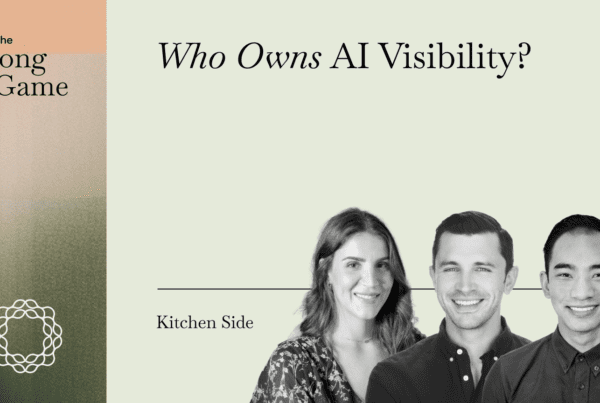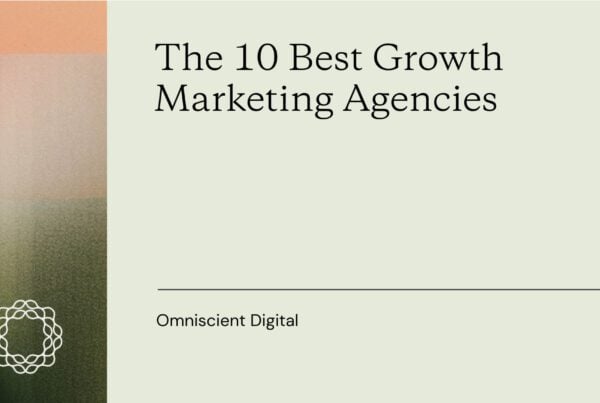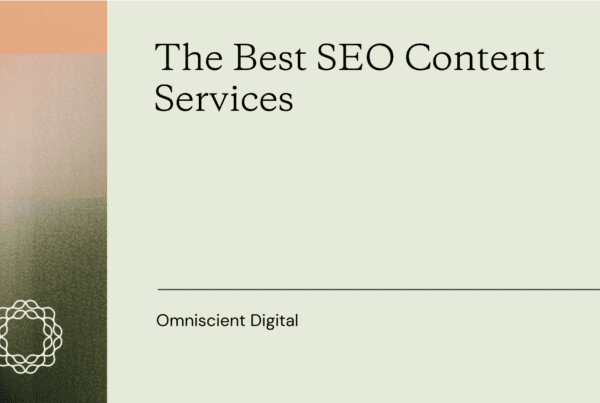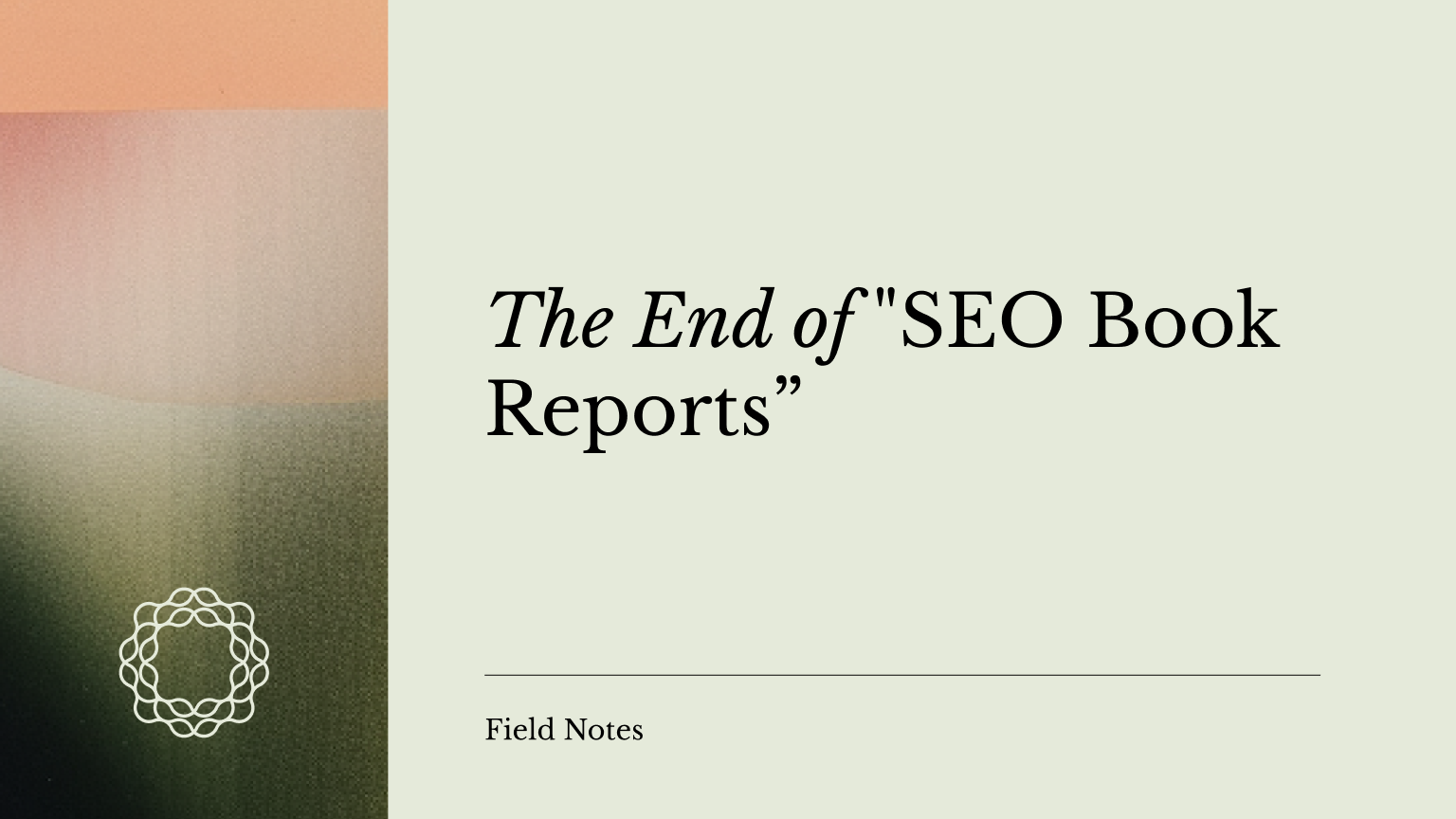
For the last decade, much of B2B content has operated under an unspoken bargain: in exchange for passably competent prose and adherence to SEO protocol, Google would send traffic.
So long as you didn’t veer wildly off course (didn’t spam, didn’t plagiarize, didn’t publish absolute nonsense) you could build a decent growth engine by recycling commonly available information, aligning to predictable and high search volume queries, and attaching your brand to the outputs.
In concrete terms, think of this as the era of the Ultimate Guide, the defining mark being the “Skyscraper Technique.”
This made sense, economically. The cost of content creation for this style of content was low-ish, especially if you had an established website with strong authority (and, on the production side, if you didn’t demand subject matter expertise). You could – and many brands did – build what were effectively content assembly lines: keyword, brief, composition, editorial revision, optimization, publication, repetition.
And the returns, at least at scale, were predictably positive.
But this approach is predicated on one condition: that the discovery and synthesis of information remains effortful for the end user. That people are using Google to search “what is [keyword]” and clicking on the first, second, or third link.
That condition no longer holds.
Today, LLMs can perform real-time multi-source synthesis. Search engines return direct answers.
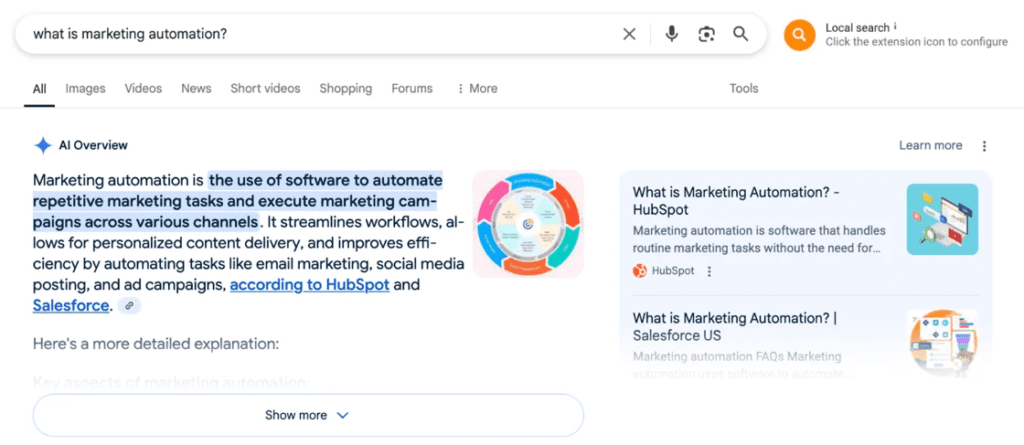
Perplexity conducts your cursory research for you. Claude delivers you an answer in affable language.
An unnamed Google employee was once quoted as saying sending traffic to publishers was a “necessary evil,” and at this point, the overton window seems to have opened up wide enough for them to ebb the flow of this “necessary evil.” When the platform itself becomes the summarizer, and content supply has been unleashed, it no longer needs the middlemen.
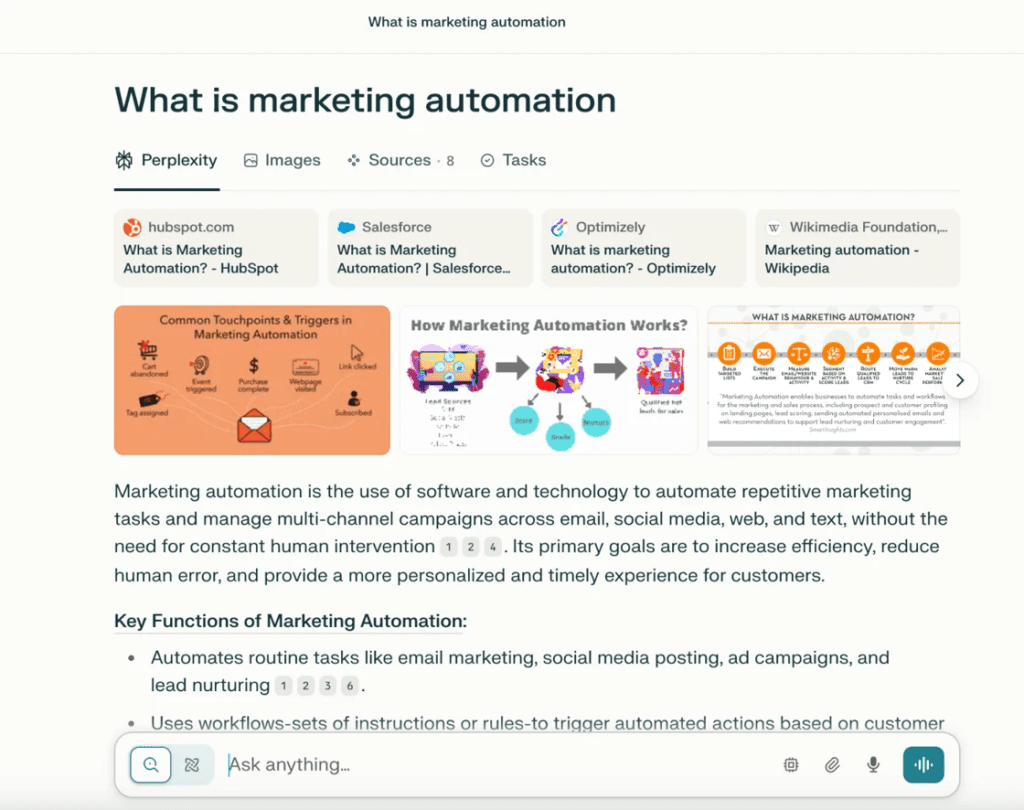
And so, the rewards for creating shallow informational content are diminished.
Level-headed caveats: informational TOFU content, written in-depth and comprehensive of the customer journey, builds topical authority which helps you rank as well as establish authority in the minds of your audience. There’s also marginal value, often brand awareness but some click-through-rate, in being the sources cited in AI overviews and LLMs. So there’s obviously still present day value here. What we’re describing is a directional trend that is clear from the past and likely to accelerate in the future.
The Writing on the Wall
We’ve been thinking about this for awhile, starting with the realization that many marketers were stuck in a “traffic trap,” spinning up high search volume, low information-density content in pursuit of traffic growth (at the expense of relevance, conversion, and revenue growth).
More recently, we wrote an essay at the earliest signals of informational TOFU content decaying in value, titled “TOFU is Suffering (…Let it Die),” taking the contrarian view that this would be principally a good thing for smart and innovative marketers.
And then this past week, a thought-provoking LinkedIn post by Ryan Law struck a chord (…and a bit of acrimonious debate.).
He posited that future marketers will look back and marvel at “how every SaaS company had a library of rehashed Wikipedia content on their website.” This educational content, these resource centers, weren’t an innate part of marketing; they were a “product of very specific incentives created by one company (Google). and those incentives are disappearing.”
As Ryan aptly notes, “the incentives are changing. The rewards are changing.”
Methinks this has actually been the case the last several years or so, but our traffic charts still obfuscated the fact that this playbook has largely been a mirage. Additionally, featured snippets and native Google modules had already been eroding the traffic bargain.
Now, however, that trend is accelerating.
Google, LLMs, and the Frictionless Future
Every generation of technology that reduces friction changes not only the behavior of the user but the economic logic of the system. Just as Uber didn’t just make cabs cheaper but rewired expectations around availability and convenience, LLMs don’t just help summarize, they flatten the asymmetry between those who know and those who ask.
Before, discovery required effort: going to the library, searching, reading, evaluating. The internet compressed that cycle. Search engines indexed and ranked the chaos. Featured snippets further distilled it. And now, LLMs offer on-demand answers in any preferred format, often without any need to click through.
This creates a dual collapse:
- On the input side, the barriers to content creation have disintegrated. Writers no longer need to know; they need only to prompt.
- On the output side, users don’t need to sift and read; they merely need to ask.
The result is that undifferentiated content, especially content that simply re-words the dominant SERP themes, is losing power.
You can see this reflected in metrics. AI Overviews reduce organic click-through by more than 30% (note: studies vary, but most show a solid drop), and many newer sites are finding that even well-optimized content now struggles to index, let alone rank.
While some content will always be inherently valuable (explaining your company’s existence, detailing product features, helping customers achieve outcomes) this often amounts to a relatively small library in comparison to the MarTech information centers of 2017. Much of today’s content marketing has sprawled far beyond these core necessities into pure information arbitrage, a game LLMs are far better equipped to play.
The Constraints of Our Current Toolkit and Mindset
Let’s be honest about the typical “SEO content process.”
It often starts by firing up a tool like Ahrefs, running content gap analyses against competitors, and pulling keywords into a spreadsheet. These are then clustered, stack-ranked (often by volume, sometimes with weighted variables for keyword difficulty, product relevance, or customer journey stage), and turned into content briefs. These briefs are frequently a reverse-engineering of what’s already ranking, with content optimization tools explicitly identifying patterns in top-ranking content.
The brief then goes to a writer, who might be specialized in writing for, say, MarTech blogs, but often lacks firsthand experience in the subject matter. They become assemblers of “book reports,” synthesizing existing information rather than injecting new data, unique insights, or firsthand experience. The piece is edited, perhaps optimized to hit a certain tool-based score, adorned with stock (or now, AI-generated) images, and published on a blog that looks and feels like countless others, featuring the same “how-to,” “what-is,” and “benefits-of” articles.
The result? No real differentiation. Sea of sameness. No alpha.
No More Book Reports
The problem isn’t that this doesn’t work at all.
As with anything, the future is here, it’s just not evenly distributed (i.e. if you find an underoptimized industry, you could probably make this work well). The problem is that it used to work too well, and now it doesn’t work enough – or at the very least, the expected value equation doesn’t make sense anymore.
I think we need a new process, one that decouples keywords from content strategy (real controversial, I know…).
At Omniscient, we’ve modeled something we are tentatively calling the Ikigai of SEO. The concept is simple: reverse the order of operations. Instead of starting with keywords, you layer on SEO or channel data to stack-rank and prioritize, cluster and structure your roadmap, and optimize for channel distribution. Your starting point, your base layer of research, is formed instead by buyer research, voice of customer, pain points, and jobs-to-be-done, which is then mapped onto product utility, competitive differentiation, messaging, and features.

In other words, SEO (or GEO) becomes a lens for distribution, not a map for ideation.
A New Paradigm: Where True Value Lies
So if the returns to simple informational content are declining, where’s the remaining alpha?
It’s in the inverse of what machines are good at. Not replication, but originality. Not compression, but context. Not speed, but specificity.
Several dimensions still create real value:
- Experience: Writing from the perspective of someone who has done the thing, not just studied it (or, someone who has studied it, truly studied it, for extensive and focused periods of time). This is more important in editorial and educational content, and particularly in technical industries or topic lines (at the extreme, I expect someone teaching me how to execute a triangle choke to be able to do one themselves).
- Proprietary data: Observations derived from your own product, customers, or research, not just rehashed public knowledge.
- Brand: As information becomes commoditized, who says something becomes more important than what they say. Additionally, your brand coverage, mentions, and sentiment across the web increasingly matter as much if not more than what you say on your own website (due to LLM synthesis, of course).
- Product-led experiences and UGC: I’m lumping two somewhat disparate things into one category that is effectively a unique website experience resembling more of a product than informational content. And in fact, you can blend these together, like Creatie did with their community-driven templates library or HockeyStack did with their influencer dashboards.
- Point of view: Not a big fan of salacious hot takes and rage bait as a calculated strategy, but if you have contrarian views, let ‘em rip. Great for organic social and newsletters, especially, but really works in most formats and channels.
It may sound abstract, but the real test is this: if a generic prompt to ChatGPT could recreate your post in under a minute, it has no moat.
In any case, even ignoring any changes in channel effectiveness, you can simply rethink how you plan and sculpt a given piece of content, a campaign, or an experience: Instead of crafting briefs based solely on reverse-engineering the SERPs, prioritize what is most meaningful: What unique value are you adding to the conversation? How does your brand or product logically fit in? Then, frankly, automate the cursory SERP analysis and optimization functions. It’s a low-alpha activity, so streamline it.
When it comes to writers and editors, shift from generic content creators to those with genuine subject matter expertise or the skill to interview and collaborate with SMEs to inject firsthand experience and novel talking points.
This shift is, I believe, a fantastic development for users and for ambitious, creative, and curious marketers who were tired of the assembly-line approach.
As I mentioned in a previous LinkedIn discussion, “SEO was too easy for too long… Did we really want to spend the golden days of our careers publishing ultimate guides and pushing links to them to drive vanity traffic? Not me.”
Embrace the Difficult, Create the Novel
Simply summarizing information and hosting it on your blog was a low-cost, high-value play for a long time, forming the backbone of much B2B SEO. But common sense dictates that its value had to erode with increased supply and more efficient platform delivery (featured snippets, AI answers). While some niche advantages for information arbitrage may linger, if your core content strategy can be replicated by a single ChatGPT prompt, its value is fragile and declining.
The path forward? Index on hard-to-fake advantages, novel data and information, and yes, even creative brand marketing initiatives that generate genuine buzz, conversation, and affinity.
It’s time to lift some heavy-ass weights.
Want more insights like this? Subscribe to our Field Notes.
